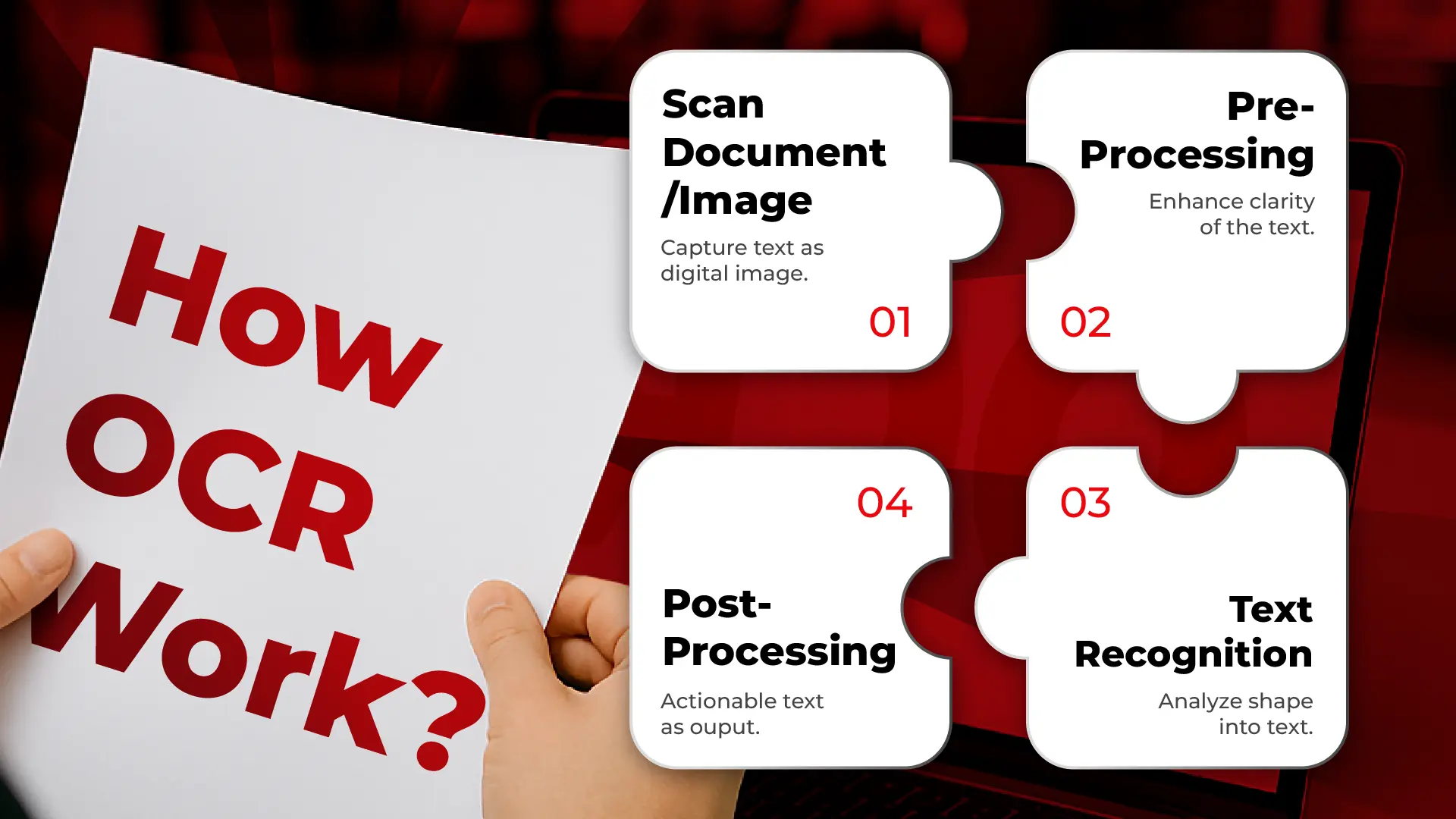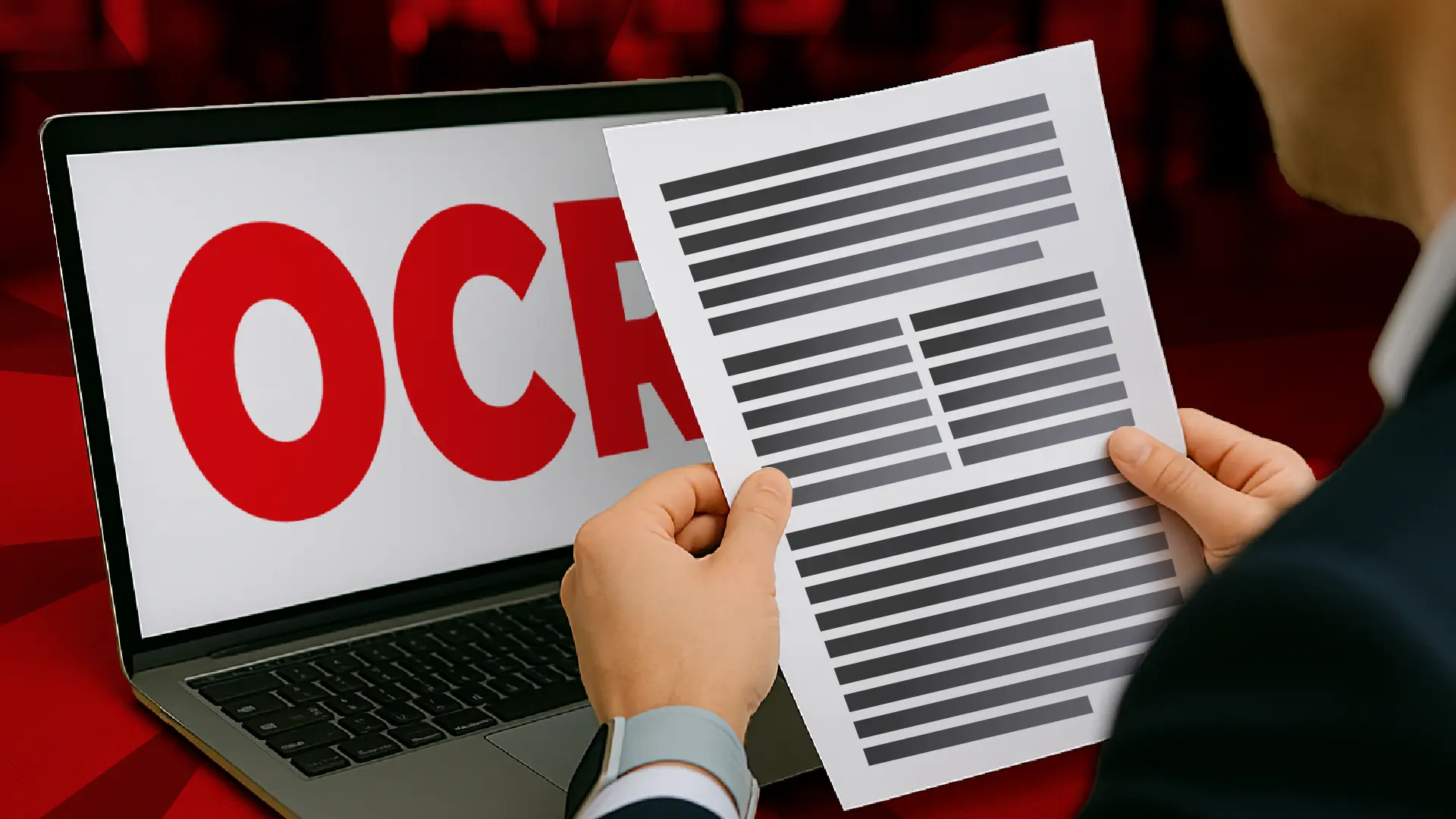How do you input data from physical documents into a computer? The first thing that might come to mind is using a scanner. However, a scanner only captures an image of the document, meaning you can’t directly edit or process the data. Now, imagine having hundreds or even thousands of physical documents that need to be entered into a computer. Sounds tedious, right?
OCR (Optical Character Recognition) technology solves this issue by digitizing documents and images into usable text data tailored to our needs.
In this article, KLIK Group will discuss:
- What OCR is
- How OCR works
- The role of AI in OCR data processing
What Is OCR
OCR stands for Optical Character Recognition, a technology that converts various types of physical and non-physical documents into editable and manageable digital formats.
Why Need OCR?
OCR enables computers to read and recognize text from images, helping businesses:
- Digitize physical documents.
- Automate data entry into systems.
- Improve data management for easier searching and more efficient data analysis.
Processes that once took significant time can now be done quickly, accurately, and at scale.

How OCR Works
OCR goes through several stages to input physical documents into editable data, including:
- Image Capture
The first step in OCR processing involves capturing the document as an image. The OCR application uses this scanned image and classifies it into light and dark areas (light areas correspond to the background, while dark areas correspond to the text). The OCR then examines the dark areas to extract information. - Preprocessing
To ensure accurate data extraction, the OCR application cleans the captured image and checks its clarity. Some image-cleaning techniques include:- Deskewing: If the captured image is misaligned, the OCR application adjusts it to appear straight before analysis.
- Despeckling: Removes noise spots and smoothens edges to enhance image clarity.
- Character Recognition
OCR processes the characters in the image to extract data. This is done in two ways:- Pattern Recognition: Used to identify letters and numbers in the captured image/document. The OCR application matches each character shape with stored character/glyph data. Pattern recognition only works if the stored characters have the same font and scale as the searched characters. Thus, it is effective for typed documents but not handwritten ones.
- Feature Recognition: Instead of looking at characters as a whole, OCR analyzes attributes like lines, curves, angles, and intersections. Based on these, it matches them with stored character shapes.
- Post-Processing
At this stage, the text is converted into a digital file. This digital text can then be used for searching, editing, and analysis quickly and efficiently.
AI's Role in OCR Data Processing
OCR applications have existed for years but have historically faced challenges because they needed to be trained on every dataset, image, or page to avoid errors. This time-consuming process made OCR seem inefficient.
However, with technological advancements and the emergence of Artificial Intelligence (AI) & Machine Learning (ML), OCR has improved its accuracy and can now learn independently from the instructions and corrections we provide.
By leveraging OCR technology, businesses can automate manual data processing, reduce human error risks, and make data easily accessible, unlocking new value for their operations.

Transform Your Data, Strengthen Your Business!
With 11 years of experience delivering AI-powered Digital Transformation, KLIK Group is ready to create a custom OCR application tailored to your business needs!


RELATED POST
Infographic: Utilization of Sentiment Analysis for Social Media
Nov 28, 2025
Identify The Right Type of Sentiment Analysis for Your Business
Nov 05, 2025
Key Success Factors of Sentiment Analysis
Oct 23, 2025